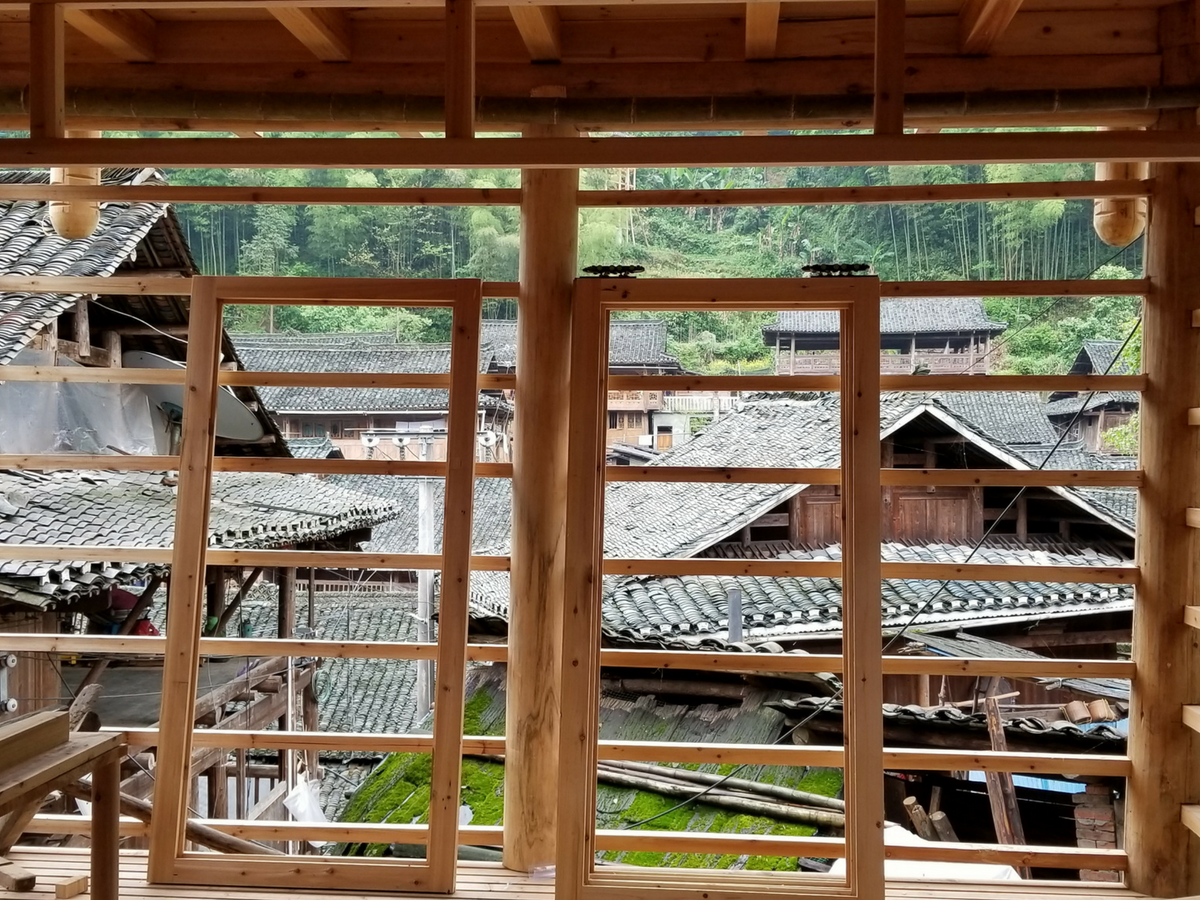Although buffeted by changing global trends and the encroachment of modernity, Dali Village has never lost touch with its cultural heritage. The village retains its historic, vernacular architecture from iconic drum towers to covered bridges, and many intangible aspects of traditional life are still daily rituals in the lives of the local people.
Even the recent Cultural Revolution, which destroyed so many unique aspects of Chinese culture, failed to stamp out the ancient arts Dali has become so well known for, especially its local textile traditions. Throughout the village, many households still grow and process their own indigo, turning it into dye for baths that are handed down from generation to generation. Mothers strive to teach their ancestral indigo dyeing techniques to their daughters, hoping to share a body of knowledge that the women of the village have accumulated over hundreds of years.

Local women dye indigo using traditional methods.

Freshly dyed indigo textiles drying in Dali Village.
We at Global Heritage Fund are proud to support the artisans of Dali Village. Our recent #DonateforDali crowdfunding campaign sought to raise awareness and support for the women of Dali, and you responded with an outpouring of generosity. That’s why we are excited to share the latest updates on the success of our campaign with you.
But first, we would like to say thank you. You showed such overwhelming support for the women of Dali Village that we were inspired to extend the campaign for another week! Thanks to your efforts and the support of our partners, we have already begun construction on the textile cooperative in Dali Village. Once complete, this cooperative will ensure the continuation of Dali’s irreplaceable textile crafts by hosting educational workshops, storing fabric, providing childcare for working mothers to stay close to their children, and operating as a community space for village gatherings.
In addition to workshops, the cooperative will also provide valuable business development and training for the artisans, who are learning to market their traditional crafts on an international scale. We have partnered with Studio Atlas to help the women of Dali sell their crafts to global audiences. In fact, you may already own Dali products of your own — we raffled five beautiful, handmade pillowcases to campaign supporters who donated $100 or more to the campaign. Were you one of the lucky five to win a pillowcase?

Craftswomen hard at work in Dali Village.

Pillows on display at Beijing Design Week 2016.
The international appeal of Dali’s indigo crafts is key to the continued preservation of local textile knowledge. Dali’s unique textiles are highly distinctive, arresting the attention of international designers and creating further work for Dali’s craftswomen. Throughout the world, demand is high for artisanal crafts imbued with the social and cultural contexts of their communities of origin, and the modern artisan market is estimated to be a $32 billion a year industry. With such high demand for artisan textiles, the textile cooperative and efforts at crafts revitalization are building capacity for more than just the craftswomen. These initiatives also provide an economic stimulus for younger generations to pursue traditional crafts rather than seek employment in China’s urban centers.

Construction on the textile cooperative begins.

A view from the interior of the cooperative space.
Like many rural areas in China, Dali Village is subject to an outflow of its population. The average age in Dali is rising as the youth pursue employment in larger urban areas. Unlike in other rural parts of China, many of Dali’s youth actually would prefer to stay in their hometown, perhaps reflecting the traditional isolation of Dali Village. “Many of Dali’s youth don’t want to leave,” explains our Director of the China Heritage Program, Ms. Kuanghan Li, “but there just aren’t enough jobs for them. They need jobs, so they are forced to go to the cities.”
Here at Global Heritage Fund, we know that heritage conservation is about more than monuments. Preserving the history of an area must include its people and recognition of its unique setting. That’s why we challenged ourselves to provide opportunities for Dali’s youth to stay in their hometown, claiming ownership of their unique history and heritage. The textile cooperative is an invaluable step toward that goal. With the construction of the textile cooperative and the expansion of these crafts to a global audience, Dali’s youth are able to earn a living at home, learning the traditions of their mothers and grandmothers in an unbroken chain linking generations past, present, and yet to be.

Local carpenters are employed to help with construction.

The exterior of the cooperative structure.
The traditional textiles of Dali Village have survived for hundreds of years. With the help of our partners and supporters, we are proud to continue the fight for Dali’s traditions. We add our voices to those of Dali’s hardworking craftswomen to say thank you all for your support!
In addition to Dali Village, we work at many other sites throughout the globe to protect vulnerable historic treasures and traditions. Please consider becoming a monthly supporter to help us fight for vanishing traditions such as Dali’s textile crafts.

A crowd gathers to celebrate construction on the cooperative.


